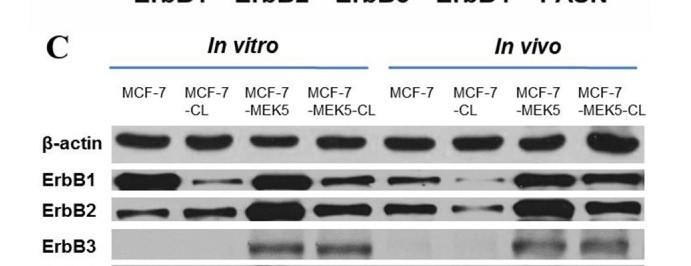Total HER3 Cell-Based Colorimetric ELISA Kit
- Catalog No.:KA4116C
- Applications:ELISA
- Reactivity:Human;Mouse;Rat
- Gene Name:
- ERBB3
- Human Gene Id:
- 2065
- Human Swiss Prot No:
- P21860
- Mouse Swiss Prot No:
- Q61526
- Rat Swiss Prot No:
- Q62799
- Storage Stability:
- 2-8°C/6 months
- Other Name:
- Receptor tyrosine-protein kinase erbB-3 (EC 2.7.10.1) (Proto-oncogene-like protein c-ErbB-3) (Tyrosine kinase-type cell surface receptor HER3)
- Detection Method:
- Colorimetric
- Background:
- catalytic activity:ATP + a [protein]-L-tyrosine = ADP + a [protein]-L-tyrosine phosphate.,disease:Defects in ERBB3 are the cause of lethal congenital contracture syndrome type 2 (LCCS2) [MIM:607598]; also called Israeli Bedouin multiple contracture syndrome type A. LCCS2 is an autosomal recessive neurogenic form of a neonatally lethal arthrogryposis that is associated with atrophy of the anterior horn of the spinal cord. The LCCS2 syndrome is characterized by multiple joint contractures, anterior horn atrophy in the spinal cord, and a unique feature of a markedly distended urinary bladder. The phenotype suggests a spinal cord neuropathic etiology.,disease:Overexpressed in a subset of human mammary tumors.,domain:The cytoplasmic part of the receptor may interact with the SH2 or SH3 domains of many signal-transducing proteins.,function:Binds and is activated by neuregulins and NTAK.,PTM:Ligand-binding increases phosphorylation on tyrosine residues and promotes its association with the p85 subunit of phosphatidylinositol 3-kinase.,similarity:Belongs to the protein kinase superfamily. Tyr protein kinase family. EGF receptor subfamily.,similarity:Contains 1 protein kinase domain.,subunit:Heterodimer with each of the other ERBB receptors (Potential). Interacts with CSPG5, PA2G4 and MUC1.,tissue specificity:Epithelial tissues and brain.,
- Function:
- cell morphogenesis, cell morphogenesis involved in differentiation, protein amino acid phosphorylation, phosphorus metabolic process, phosphate metabolic process, apoptosis, negative regulation of cell adhesion, cell surface receptor linked signal transduction, enzyme linked receptor protein signaling pathway, transmembrane receptor protein tyrosine kinase signaling pathway, intracellular signaling cascade, protein kinase cascade, axonogenesis, peripheral nervous system development, sensory organ development, heart development, muscle organ development, skeletal muscle tissue development, circadian rhythm, cell death, response to wounding, response to endogenous stimulus,response to hormone stimulus, positive regulation of signal transduction, negative regulation of signal transduction,glial cell differentiation, response to organic substance, regulation of protein kinase cascade, positi
- Subcellular Location:
- [Isoform 1]: Cell membrane ; Single-pass type I membrane protein.; [Isoform 2]: Secreted.
- Expression:
- Epithelial tissues and brain.
- June 19-2018
- WESTERN IMMUNOBLOTTING PROTOCOL
- June 19-2018
- IMMUNOHISTOCHEMISTRY-PARAFFIN PROTOCOL
- June 19-2018
- IMMUNOFLUORESCENCE PROTOCOL
- September 08-2020
- FLOW-CYTOMEYRT-PROTOCOL
- May 20-2022
- Cell-Based ELISA│解您多样本WB检测之困扰
- July 13-2018
- CELL-BASED-ELISA-PROTOCOL-FOR-ACETYL-PROTEIN
- July 13-2018
- CELL-BASED-ELISA-PROTOCOL-FOR-PHOSPHO-PROTEIN
- July 13-2018
- Antibody-FAQs

.jpg)

